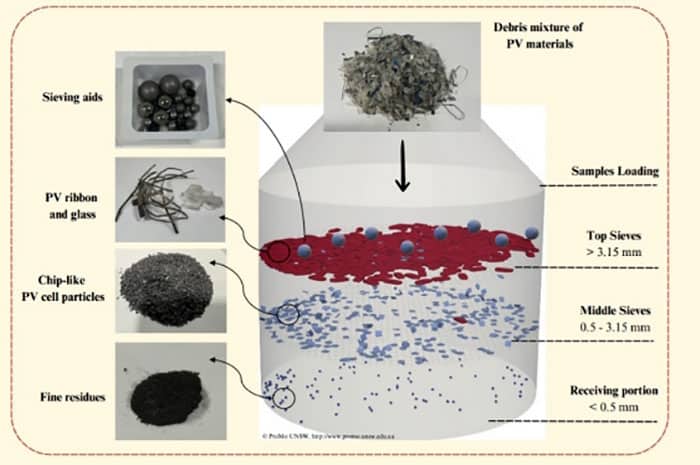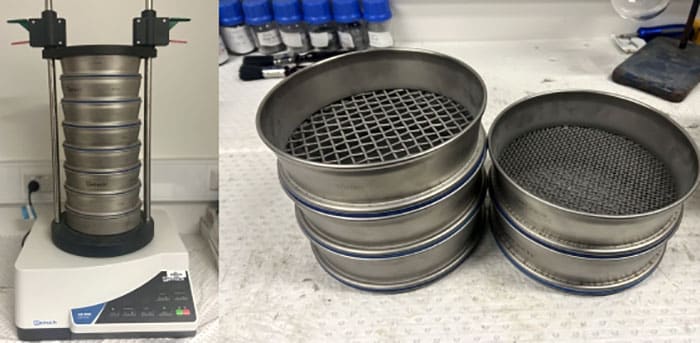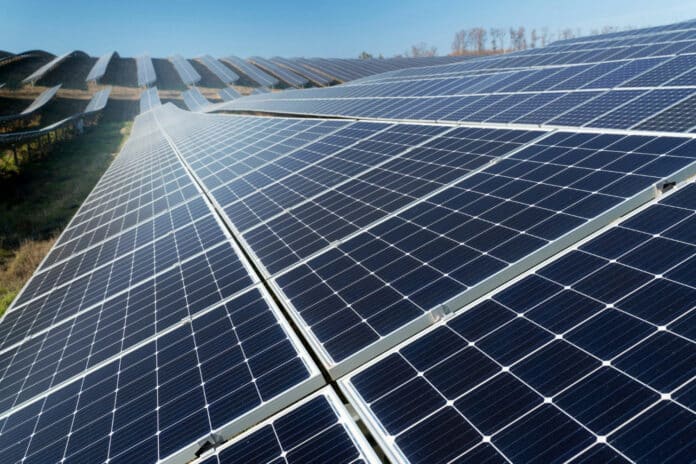Engineers at the University of New South Wales (UNSW) Sydney have developed a new, more effective way of recycling solar panels, which can recover important materials like silver at high efficiency.
The new patented recycling process has been specially created for photovoltaic panels in order to quickly and efficiently sort the component materials as a key step of highly efficient PV recycling.
Recycling solar panels thoroughly has proven to be quite a challenge until now. This is mostly because the individual parts, like glass, silicon, metals, wiring, and plastic, are all integrated in a way that makes separating them quite difficult. Despite this challenge, many experts are working hard to find innovative solutions that can help make the process more efficient and effective in the future.
It’s important to separate solar panel components carefully to avoid contamination with other materials if they are going to be reused. Manufacturers will only reuse highly pure materials, but achieving that level of purity has proven to be extremely difficult. Unfortunately, this means that most solar panels could end up in landfills rather than being recycled.

The recycling process developed by UNSW researchers integrates the conventional method with a highly abrasive separation system using the addition of sieving aids. Researchers first removed the large components, such as the aluminum frame and glass sheets, from a PV panel.
They then crushed the panel and put the crushed pieces inside a vibrating sieve device. The device uses stainless steel balls to further crush the solar cells into smaller particles, allowing better separation of all the components. The entire crushing and sieving process inside a vibrating container takes only around 5-15 minutes to effectively separate 99% of the PV materials.

Once the material has been separated, the team can employ traditional chemical leaching and precipitation to extract the specific elements, such as pure silica and silver.
In tests using the new process, the researchers were able to extract 99% of silver from a solar cell for potential reuse. The team calculates that using their process could recover 5-50 million kilograms of silver from waste by 2050, considering that around 0.64 kilograms of silver per ton of photovoltaic waste was recovered in tests.
The team is now working with industry partners to scale this process up and enhance the economic feasibility of the PV recycling process.
